If you’re craving something a little more mentally stimulating after months of Netflix binging—or just a brief break from the news—might we suggest some video art? Often intellectual, sometimes soothing, and frequently entertaining (even when it’s disturbing), there’s a reason the medium has grown in popularity among art lovers in recent decades.
Below, we’ve compiled a list of some of our favorite works of video art, available for free viewing, right from your sofa. Happy watching!
Moyra Davey’s (2015)
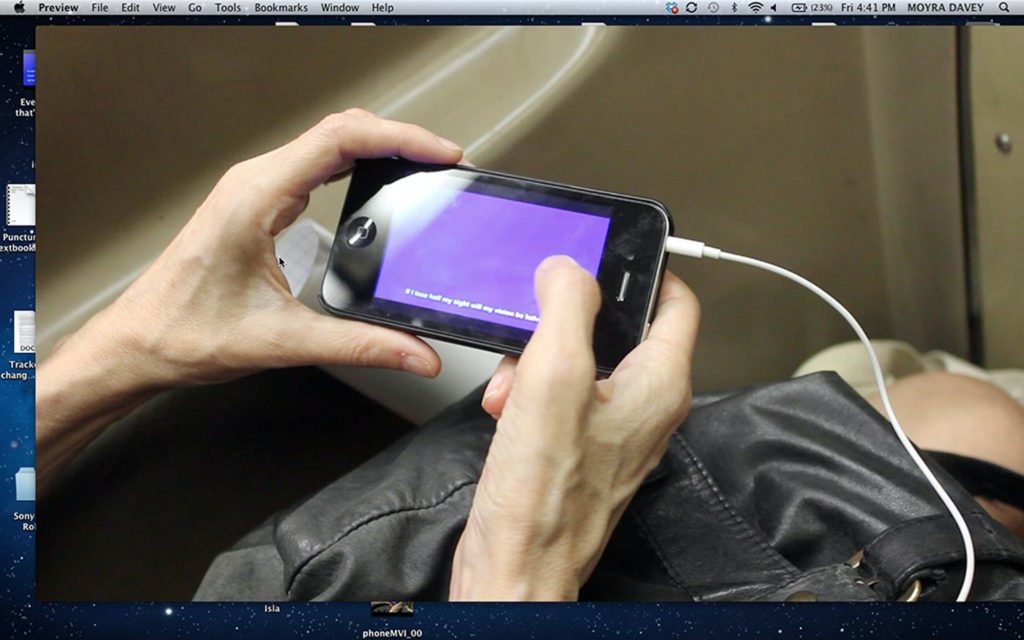
Still from Moyra Davey, (2015). Courtesy of the Walker Art Center.
Length: 28:00
Where to Watch: Vimeo
What It Is: In , a diaristic film inspired by the work of the late British filmmaker Derek Jarman, Davey paces around her apartment reciting a prewritten, cut-and-paste-style essay comprised of autobiographical observations, quotes, and reflections on sight and color.
Why It’s Worth Your Time: Davey’s moving film recalls another short work devoted to the color blue: Maggie Nelson’s 2009 lyric essay, “Bluets.” Both weave historical marginalia and personal stories into a hypnotic autofiction that touches on themes much greater than the subject that ostensibly inspired it. For Nelson, it’s love and loss, loneliness and trauma; for Davey, it’s illness, interiority, time, and the nature of film.
Amalia Ulman, “White Flag Emoji” series (2015)
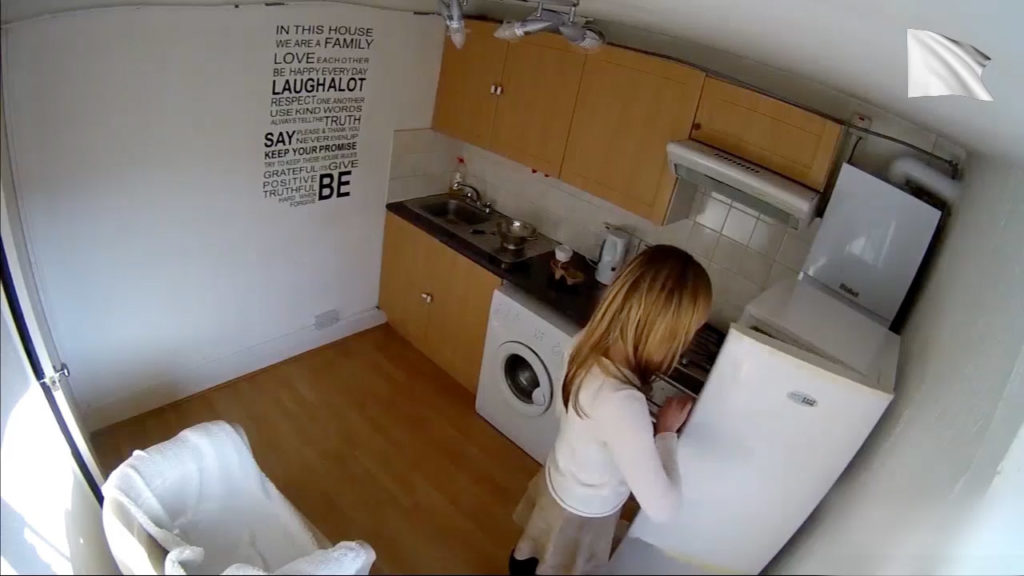
Amalia Ulman, (2015). Courtesy of the artist and Daata.
Length: Six videos of two to five seconds each
Where to Watch: daata (and Kiasma Online without watermarks)
What It Is: This series of blistering rapid-fire videos shows a heavily armed SWAT officer slamming into private homes in a series of surprise attacks on women (played by Ulman). The videos were filmed in Airbnb apartments using the cloud-based streaming service Dropcam (a precursor to Google’s Nest cam), and are scored by a soundtrack of whoops and cheers. A white emoji flag flies in the corner of the screen.
Why It’s Worth Your Time: The pixelated style of the footage evokes the kind captured on surveillance cameras, and mixed with a jubilant soundtrack that jars with the violence on screen, it evokes a critique of reality television.
Clemens von Wedemeyer, (2018)
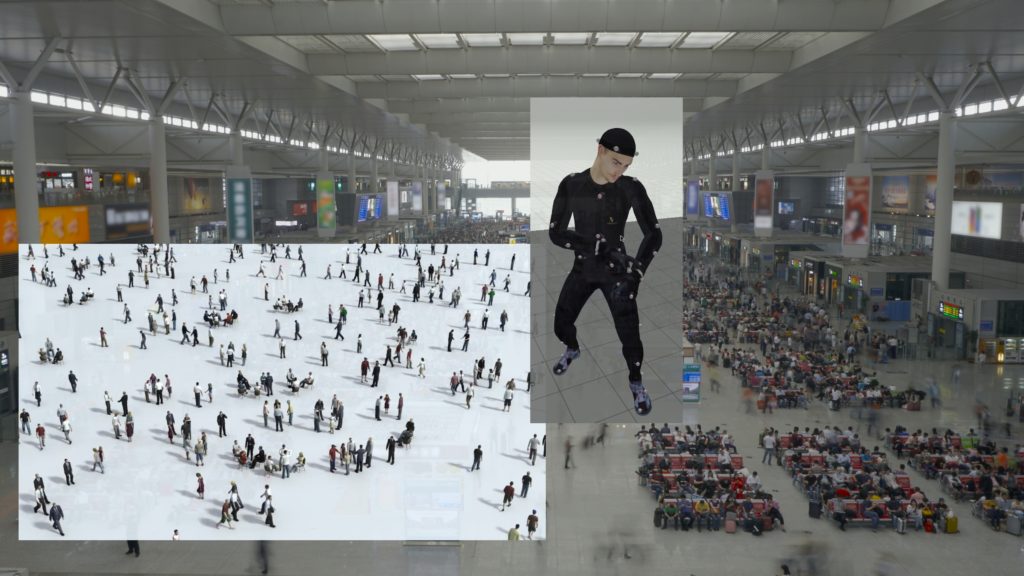
Clemens von Wedemeyer (2018). Courtesy of the artist and KOW Berlin.
Length: 20:00
Where to Watch: Vimeo and on the gallery KOW’s website.
What It Is: This video work speculates on the impact of group behavior in society. Several of Clemens von Wedemeyer’s works are now on view at KOW’s website as part of the gallery’s new digital series “ISSUES.”
Why It’s Worth Your Time: I am a fan of the German artist’s dense and intriguing videos. I first encountered at the Riga Biennale in 2018—in the “before-times,” when questions around public space and urban surveillance were urgent but not quite as widespread in our social psyche as they are now. This video, which is part of a series that examines human crowds, feels especially prescient considering that the ideal of gathering in masses feels particularly out of the frame in our current everyday life, not to mention the anti-lockdown protests we are seeing in both Germany and the US. looks at digitally simulated crowds, and the data-driven tools that are used in movies to depict large groups (it is much cheaper than hiring actors), but which have ominous implications for public life, as it shows just how predictable, replicable, and traceable human movement is.
—
Mark Leckey, (1999)

Still from Mark Leckey’s (1999). Courtesy of YouTube.
Length: 14:45
Where to Watch: YouTube
What It Is: Part nostalgia trip, part cultural anthropology, Mark Leckey’s now-legendary video work deconstructs disparate bits of found footage to create a meta-history of British dance music from the 1970s to the doorstep of the 21st century, including scenes like Northern Soul, disco, and (of course) hardcore.
Why It’s Worth Your Time: Instead of making a glorified music-video supercut to romanticize bygone scenes he gave himself over to as a younger man, Leckey coolly intervenes in his source material via techniques such as looping, montage, and slow motion to foreground the deep weirdness, unique intimacy, and fleeting lifespan of subcultures. ultimately expresses the uncomfortable but valuable reality that the best moments of our lives are always in transit… and they often look very, very different from a remove than what we perceive them to be while we’re living them.
—
Jennifer May Reiland, (2020)
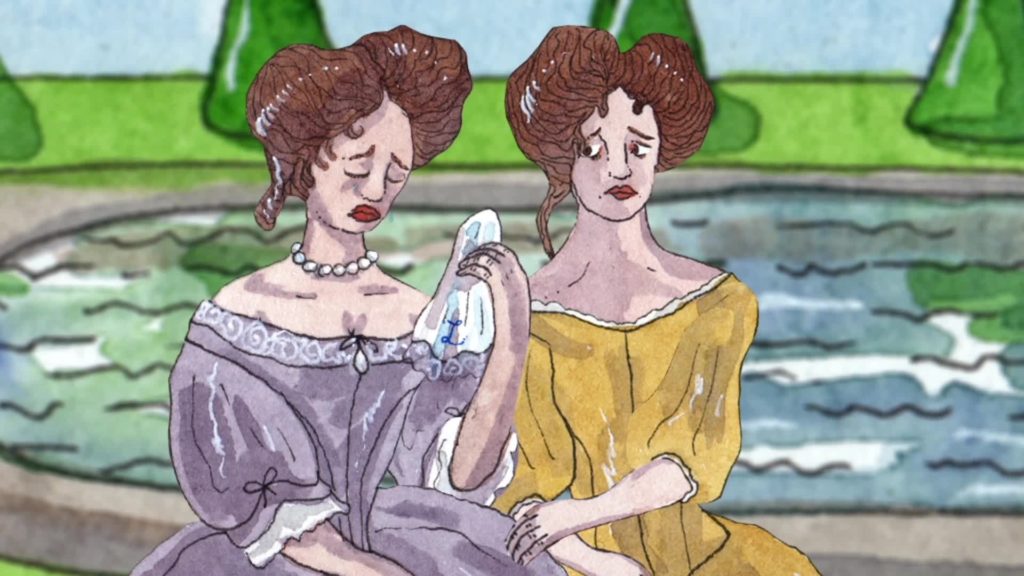
Still from Jennifer May Reiland’s (2020). Courtesy of the artist and Vimeo.
Where to Watch: Vimeo
What It Is: Jennifer Reiland’s delicate watercolors animate the life of Hortense Mancini (1646–1699), the Duchesse de Mazarin. Married off to an abusive husband at just 15, Hortense achieved infamy by leaving him—unheard of in those days—and striking out on her own. Hortense pushed back against those who slandered her name—she became mistress to not one but two kings—by publishing her memoirs along with her sister Marie, the first French women to do so.
Why It’s Worth Your Time: Reiland, an artist in residence at the Queens Museum, which recently showcased her in its Frieze Online Viewing Room, specializes in illustrating the lives of historic women, often from the courts of Europe. She lets Hortense speak in her own words, defending her controversial decision to break her marriage vows. But aside from the kings and cardinals who feature in the story, Hortense’s ordeal could have taken place during any era, her jealous husband attempting to control her every move. But this isn’t just a depressing reminder of the ongoing oppression of women. By sharing Hortense’s unlikely story, Reiland does the important work of rewriting history to acknowledge the contributions of women, and offers a celebration of their resiliency and strength.
Ed Atkins, (2014)

Still from Ed Atkins’s (2014). Courtesy of YouTube.
Length: 2:24
Where to Watch: YouTube
What It Is: The artist’s oft-used CGI character Dave is in typical form here, depicted shirtless and staring vacantly into space as he drinks, smokes, and spouts a mixture of melancholy tunes, declarations, and pleas that somehow make him frightening and sympathetic at once
Why It’s Worth Your Time: Ever since first encountering Atkins’s distinct video art at the Stedelijk Museum in Amsterdam (in the 2015 solo show “Recent Ouija”) I have spotted it elsewhere numerous times and have always been instantly drawn in. I love the fragmented speech, music, sound, and visual imagery—and the lack of any real narrative, even as the character expounds on love, death, and relationships. Is he frightening or pitiable? Angry or just sad? Is he mentally unhinged or just brutally honest? The films are always intriguing and keep you guessing about his true nature.
—
Guan Xiao, (2013)

A still from Guan Xiao’s (2013), courtesy of YouTube.
Length: 5:08
Where to Watch: Youtube
What It Is: A hokey meditation on Michelangelo’s , and how its widespread reproduction has made it practically invisible.
Why It’s Worth Your Time: Here’s a hot take, kids: Michelangelo’s is kitsch. It probably wasn’t when it was completed in 1504, but who’s to say? I wasn’t there and neither were you. Either way, it’s definitely just a one-liner now, something to put on a mug or a hat or an apron with David’s junk on your junk. And even if you actually go see it, you don’t really it, you just go, , snap your photo, then get back on your cruise and eat a fistful of shrimp. Which is fine, do whatever you want. I’m just telling you what Guan Xiao has distilled into a delightfully stupid video about our complete inability to see what everyone says is one of the most beautiful sculptures ever made. And is it really that good? Impossible to say. Tell you what though (and here’s hot take number two): my wife says Guan Xiao’s is the greatest work of video art of all time. Mic drop.
—
Marylin Minter, (2018)
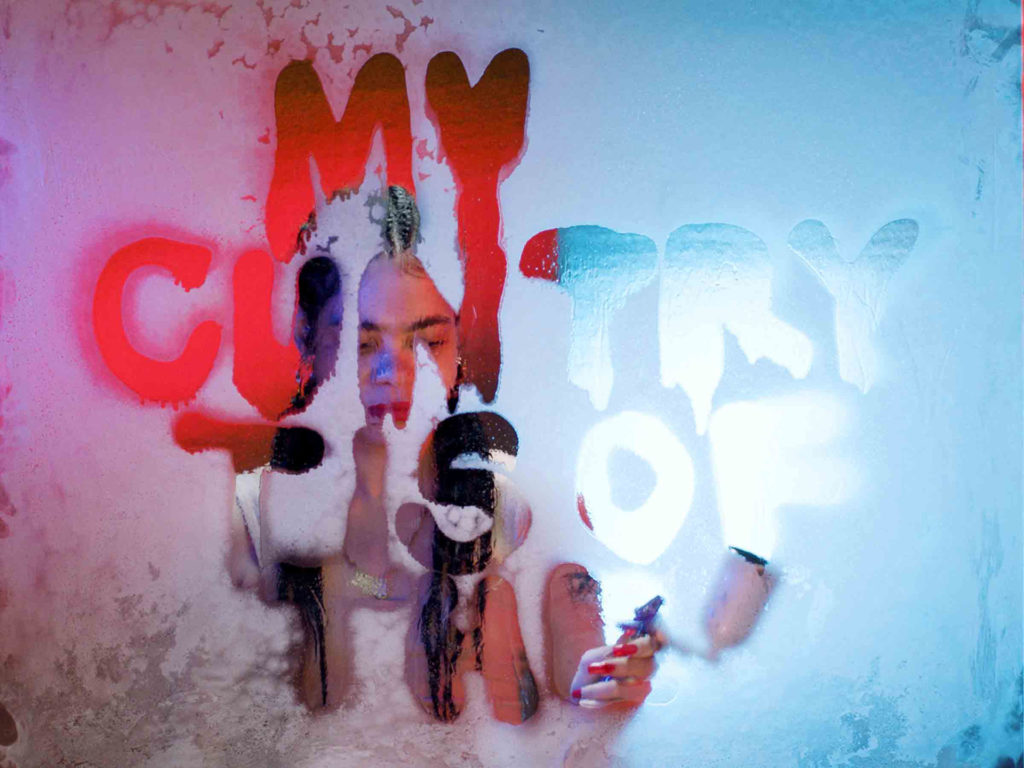
Marilyn Minter, (2018). Courtesy of the artist and Salon 94, New York.
Length: 9:45
Where to Watch: daata
What It Is: A series of women write the word “cunt” in various contexts and permutations into condensation on a glass pane.
Why It’s Worth Your Time: The women in this video by the feminist artist reclaim the word “cunt,” which is so often used in a derogatory sense by literally taking it into their hands. The power of the video is somewhat dampened in the free version of the site, however, as there is a watermark right in the middle of the screen.
Rachel Rose, (2016)
![Rachel Rose, Lake Valley, 2016 [still]. Courtesy: the artist and Pilar Corrias Gallery, London.](https://news.artnet.com/app/news-upload/2016/08/Rachel-Rose-1024x576.jpg)
Rachel Rose, still from , (2016). Courtesy of the artist and Pilar Corrias Gallery, London.
Length: 8:25
Where to Watch: the Carnegie Museum of Art
What It Is: Rachel Rose, one of the most sought-after video artists working today, made this work by layering film, collage, found footage, and hand-drawn animation to create what feels like a bedtime story come to life. She spent hours sifting through 19th-century children’s books to find just the right drawings of adorable animals and looming plant life to animate this transporting video about loneliness, imagination, and personal connection.
Why It’s Worth Your Time: When this dreamy work first debuted at the 2017 Venice Biennale, it was so popular, it was hard to get a seat on the floor in front of the screen. And while it may lose some of its enveloping atmosphere through your computer window, at least you don’t have to fight anyone for a comfortable seat.
—
Faith Holland, “The Most Beautiful Dick Pics of All Time” (2020)
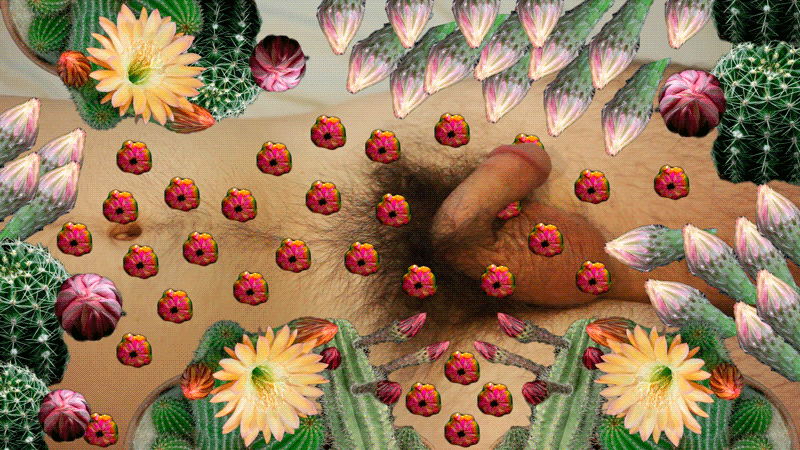
Faith Holland, from “The Most Beautiful Dick Pics of All Time.” Courtesy of TRANSFER Gallery, Los Angeles.
Length: Varies
Where to Watch: Pornhub, as part of the artist’s show “HARD/SOFT” at TRANSFER Gallery (June 4–July 30)
What It Is: Faith Holland subverts the cliché of the dick pic with a series of animated GIFs that turn tumescent penises into captivating geometric designs, or that surround the phallus with fields of blooming flowers, colorful crystals, shimmering bubbles, and other pretty, girly things. (One even squirts out glittery blue cum.) You know the trend of rainbow-colored “unicorn” foods? Holland has created the unicorn of dick pics.
Why It’s Worth Your Time: This was an unexpected delight at this year’s SPRING/BREAK Art Fair in New York—and one of the very last pieces I saw in person, before online viewing rooms became de rigueur. The erect penis is a symbol of male strength and virility. Juxtaposing it with feminine imagery is a clever rejection of gendered stereotypes about hard and soft. Rare for the millennial woman, I’ve thus far managed to avoid being the recipient of the unsolicited dick pic, but that doesn’t mean I don’t love the idea of someone getting texted this shiny, sparkly alternative to those posturing proclamations of male sexuality.
BONUS FILM CLASSIC
Chantal Akerman, (1968)
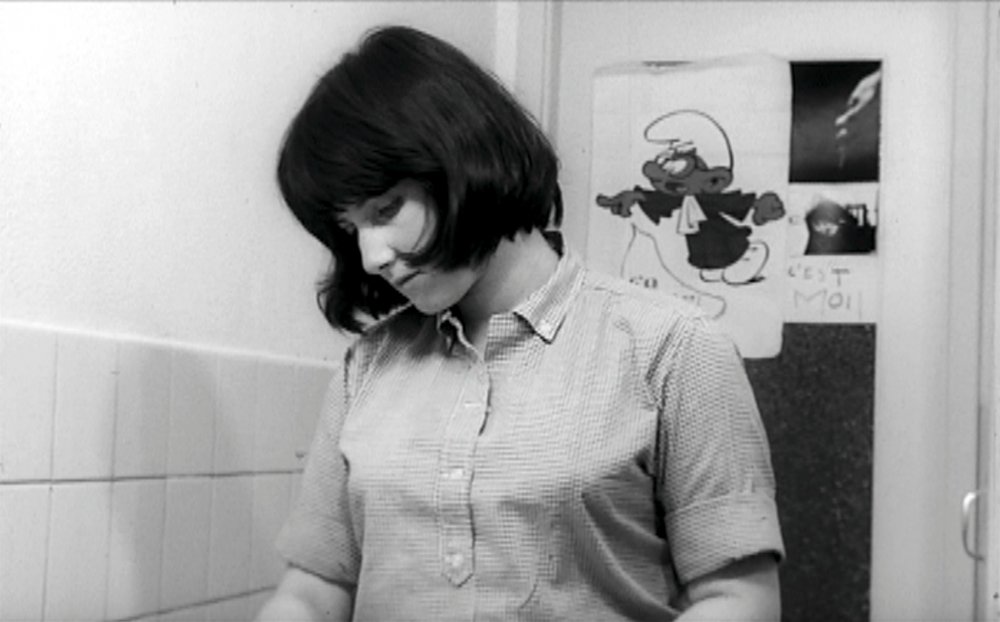
Still from Chantal Akerman, (1968).
Length: 12:30
Where to Watch: YouTube
What It Is: , made by Belgian experimental filmmaker Chantal Akerman when she was just 18 years old, dives into the repetitive boredom of domestic rituals with a winking, fun-house sense of absurdity. Akerman, the film’s solitary character, acts with Chaplinesque physicality as she chaotically enacts the everyday tasks of cleaning, cooking, and eating with thrashing, punkish intensity.
Why It’s Worth Your Time: Though the film ending is more catastrophic than happy (the film’s title means “Blow Up My Town”), the rebellious mania with which Akerman’s character acts out daily chores within a small kitchen is uncannily relatable and oddly invigorating.
—
Source: Exhibition - news.artnet.com



